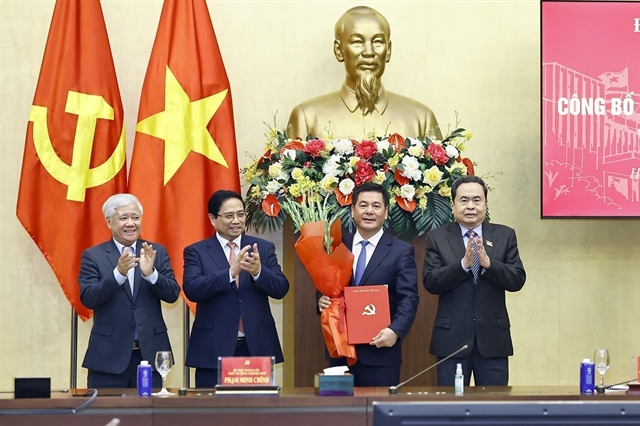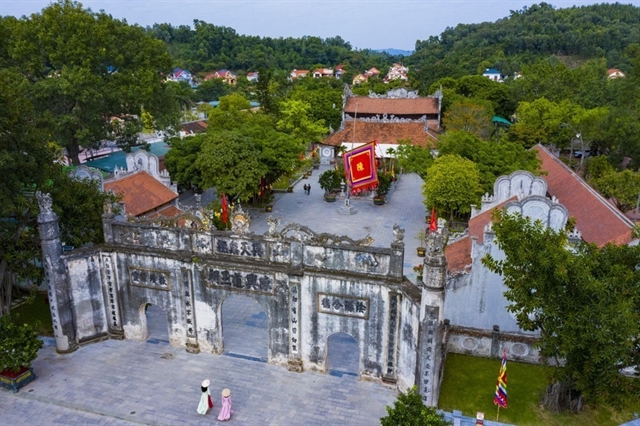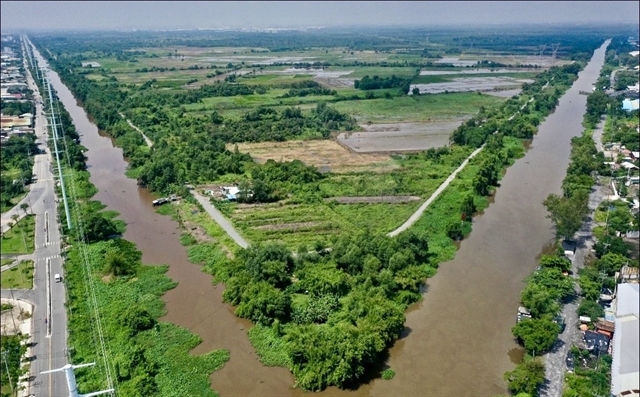 Society
Society
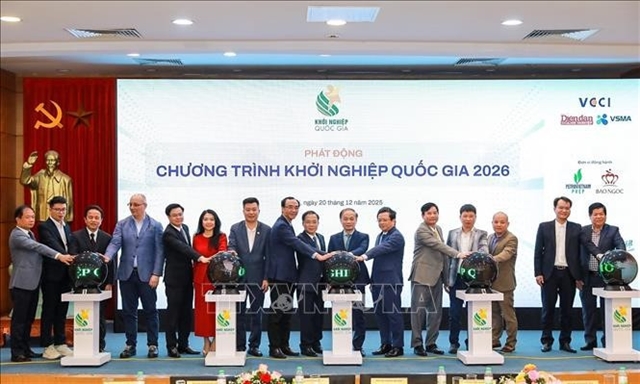
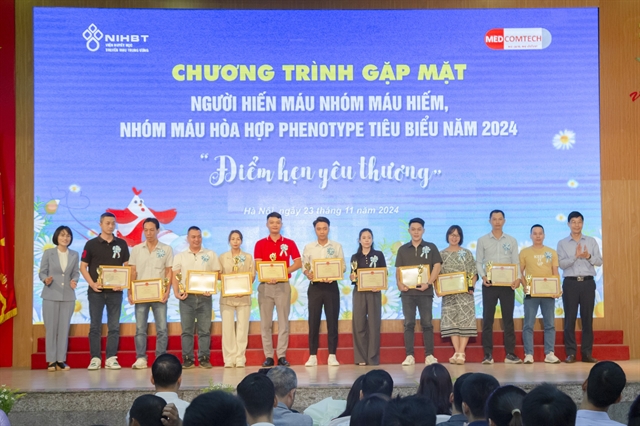
|
| Phenotype-compatible blood donors are honoured at a meeting held by the National Institute of Hematology and Blood Transfusion on November 23 in Hà Nội. Photos courtesy of the National Institute of Hematology and Blood Transfusion |
HÀ NỘI — Unlike regular voluntary blood donors, those with rare blood types or phenotypes compatible with specific patients need to be ready to respond whenever there is a need for their unique blood.
The dedication and readiness of these individuals ensure a vital source of rare and compatible blood for patients at the Hà Nội-based National Institute of Hematology and Blood Transfusion.
Whenever Lê Thị Vinh, from Hà Nội’s Thường Tín District receives a call from the National Institute of Hematology and Blood Transfusion requesting a phenotype-compatible blood donation, she immediately rearranges her personal schedule, hops on her motorbike and heads to the institute.
Vinh said that she used to frequently participate in voluntary blood donation events with friends and family. Whenever the time came, she would travel more than 30km from her home to the institute to donate blood or platelets or join local blood donation drives.
About a year ago, she received a call from the institute asking her to donate blood because her blood type was compatible with a patient in urgent need. Without hesitation, she asked a friend to watch over her store and rushed to the institute.
"Since my house is quite far from the institute, that day I returned home late, but I was very happy knowing I had saved someone's life," Vinh recounted her first experience donating phenotype-compatible blood upon request.
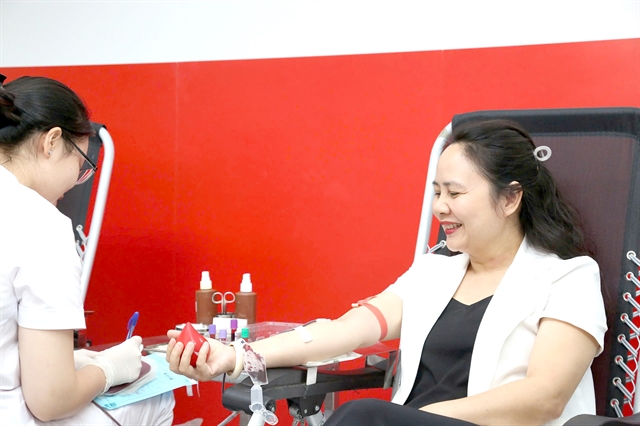
|
| Thu Hằng from Hà Nội’s Hai Bà Trưng District with phenotype-compatible blood type donating blood. |
Similarly, Thu Hằng from Hà Nội’s Hai Bà Trưng District discovered she had a phenotype-compatible blood type after participating in voluntary blood donations. Since then, she has donated blood multiple times upon receiving calls from the institute.
Hằng admitted that when she first learned about her compatible blood type, she felt a mix of surprise and concern. However, after receiving detailed explanations about her blood type and its significance to patients, she was determined to stay healthy and ready to respond whenever there was a need.
Phạm Ánh Ngọc, 25, from Hà Nội, has donated rare blood 16 times and remains eager to donate whenever she is called.
Ngọc vividly recalled her first time donating blood for a patient with a rare blood type. It was also the first time she fully realised the importance of her contribution.
"In 2022, while I was at work, I received a call from the institute asking me to donate blood. I was quite taken aback because I never thought my blood type was that rare,” she said.
“I didn’t even wait until the end of my shift. I asked for leave and rushed to the institute. On the way, I felt very anxious, worried that if I arrived late, the patient might be in danger," Ngọc recounted.
Since then, Ngọc has become among the first responders for the institute, always ready to help whenever someone needs her rare blood type.
Nguyễn Hoài Sơn, a 24-year-old from Hà Nội, shared his story. He has participated in voluntary blood donation since he was in college. After his first blood donation and subsequent testing, he was informed that he had the rare AB Rh(D)-negative, a rare blood type.
Since then, Sơn has responded to calls from the institute for donations. Over time, he has come to understand the crucial role donors like him play in saving lives.
"Each time the institute calls me to donate blood for a patient, I know that both the patient and their family are very worried and are in urgent need of my blood. After every donation, I strive to maintain a healthy lifestyle and improve my fitness so I’m always ready to donate whenever needed," Sơn said.
Dr Trần Ngọc Quế, Director of the National Blood Centre under the National Institute of Hematology and Blood Transfusion, explained that patients requiring frequent transfusions are exposed to more foreign antigens, increasing their risk of developing irregular antibodies.
In such cases, ensuring compatibility in the ABO and Rh blood systems alone is insufficient. Safe transfusion requires matching antigens across additional blood group systems, a process known as phenotype-compatible blood transfusion.
In Việt Nam, one rare blood type often mentioned is Rh(D)-negative, as it accounts for less than 0.1 per cent of the population. In contrast, in Europe and many other countries, Rh(D)-negative blood is much more common, found in 15–40 per cent of the population.
In 2024, the institute received nearly 240 requests for rare blood units and 2,458 requests for phenotype-compatible blood from healthcare facilities. However, the stored supply meets only 56 per cent of the demand. The remaining 44 per cent requires active outreach to donors.
Quế said that thanks to funding from various programmes and projects, the institute has been able to conduct extended blood antigen testing beyond the ABO and Rh systems for regular blood donors.
The information on donors with rare Rh(D)-negative blood or phenotype-compatible blood is stored in the institute’s database. This enables the institute to quickly contact appropriate donors when a patient requires their unique blood type, ensuring timely treatment.
Quế highlighted the extraordinary dedication of many donors, who prioritise blood donation despite busy work schedules and significant responsibilities.
"Their enthusiasm and readiness to help ensure we can maintain this precious and essential blood supply. The institute and I deeply appreciate, admire and are grateful for their timely and noble actions," he said.
Dr Nguyễn Thị Thu Hà, Director of the Thalassemia Centre at the instite, said the centre currently manages and treats approximately 3,000 patients with thalassemia.
To date, 30 per cent of thalassemia patients have received phenotype-compatible blood transfusions. This practice minimises transfusion-related complications caused by mismatched red blood cell antigens and reduces the likelihood of irregular antibody formation.
Additionally, it helps limit the need for iron chelation therapy in patients who require regular transfusions. — VNS

